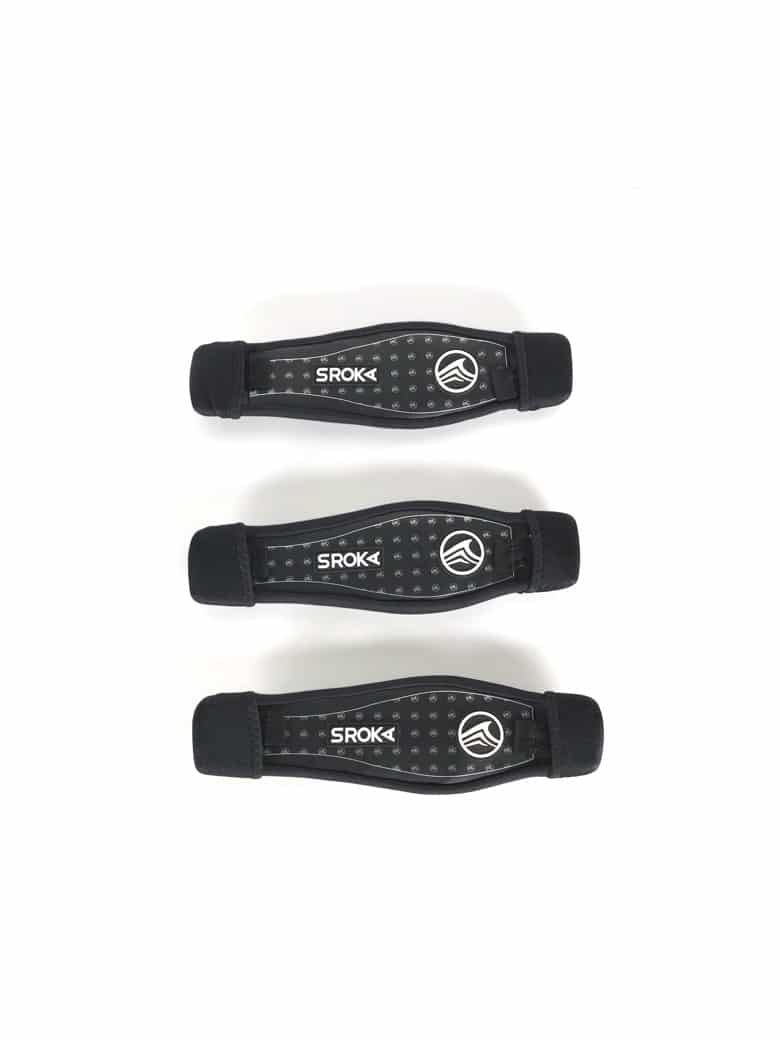

Have a question? Contact us on +33 2 98 32 53 69
Adjusting wedges S-Foil SROKA G10
59,90$
In stock

Have a question? Contact us on +33 2 98 32 53 69
Adjusting wedges S-Foil SROKA
This set of G10 shims enables the angle of the S-Foil stabilizer to be varied. This angle variation increases the S-Foil’s range of use. These S-Foil SROKA shims are placed between the fuselage and the stabilizer. If you’re using the recommended stabilizers, you won’t need any adjustment shims, unless you’re looking to customize and fine-tune your stabilizer for greater balance or speed.
We offer you a small box with 8 wedges with different angles.
- + and – 0.25°.
- + and – 0.5°.
- + and – 1°.
- + and – 2°.
This makes it possible to adjust from +3.75° to -3.75° with precision every 0.25°.
Do you need an adjustment wedge?
To begin with, it’s important to know that with every foil we offer, we recommend a stabilizer adapted to your size and level. For example, with the 1350 Lift, a 95 kg weight will find it easier to use the 300 cm2 stabilizer, while a 60 kg weight will use the 180 cm2 stabilizer. If you follow our recommendations, you won’t need any shims.
If the 95 kg model wants to go faster and increase its manoeuvrability by using a 180 stabilizer, it’s possible. However, as the stabilizer has not been designed for this size, it will lose longitudinal stability. In this case, you’ll need to use a positive-angle shim (with the rear of the shim thicker than the front) to regain perfect longitudinal stability.
What are adjustment shims used for?
To understand the principle of a shim, you first need to understand how the stabilizer works. To stabilize, the foil must be braked to a greater or lesser extent. The two main parameters for braking a foil are increasing the surface area of the stabilizer and increasing the angle of the rear fin.

Depending on your speed, your technical level / weight and your foil, your balance on the foil is not the same. As a result, you need to adjust the angle of the stabilizer to achieve perfect balance.
The few shims available on the market are made of injected plastic, aluminum or 3D printer.
We have developed G10 shims for maximum precision with maximum finesse. G10 is a very dense material that is highly resistant to crushing (10 layers of fiberglass pressurized to make a single thickness. It is insulating, it can be machined very finely, and does not compress). It’s a nice piece that brings a real plus in the precision of the settings while keeping the same rigidity.
The g10 wedge is positioned between the stabilizer and the fuselage. It’s simple and easy to use.

Which adjustment wedges for which stabilizers?
- The 300 cm2 is the standard stabilizer and already has an angle (positive) to make the foil plug and play and usable without question. So there’s no need to use positive shims with this stab. However, you can improve the overall speed of a foil using this stabilizer by using negative shims. That is, shims with the front thicker than the rear. This reduces drag, which increases the speed of the foil.
- With the stab in 240, you can use a bit of negative wedge to reduce the angle, which can be useful with the 950 Speed if you are light or on the future 670cc and on some models like the 1350 Lift. For heavy gauges, lift can be recovered by installing positive shims.
- Finally, with the stab in 180, we only use the positive wedges to increase lift. (its angle is already neutral)
Troubleshoot an issue:
The aim when sailing is to have the same pressure on both legs. If you have too much pressure on the front foot, i.e. the foil only goes up, then you need to reduce the angle of the stabilizer by using a negative wedge (thicker edge in front than behind).
If you find your foil too unstable in the longitudinal axis, or that the foil tends to dive forward, you can angle your stabilizer by using a positive shim (thicker edge at the rear than at the front) before trying to modify the position of the mast on the rails.
Customize your experience :
If your aim is togo faster, you need to reduce drag by reducing the angle of the stabilizer. The 240 and 180 stabilizers already have a very small angle. If you have the 300 stabilizer, you can reduce its angle (with a negative shim) to gain a little speed without having to change stabilizers.
The fuselage’s influence on stability :
The longer the fuselage, the more longitudinally stable the foil, so you can afford to reduce the angle or size of the stabilizer to gain speed.
Conversely, the shorter the fuselage, the less stable the foil. You can therefore add angle to increase stability.
How to test on water?
Once you have chosen the type of shim you want, test them directly with +1°, and then adjust as you see fit in increments of 0.25 degrees.
Plus d'informations
| Weight |
|---|
0.5 kg |
Presentation vidéo






